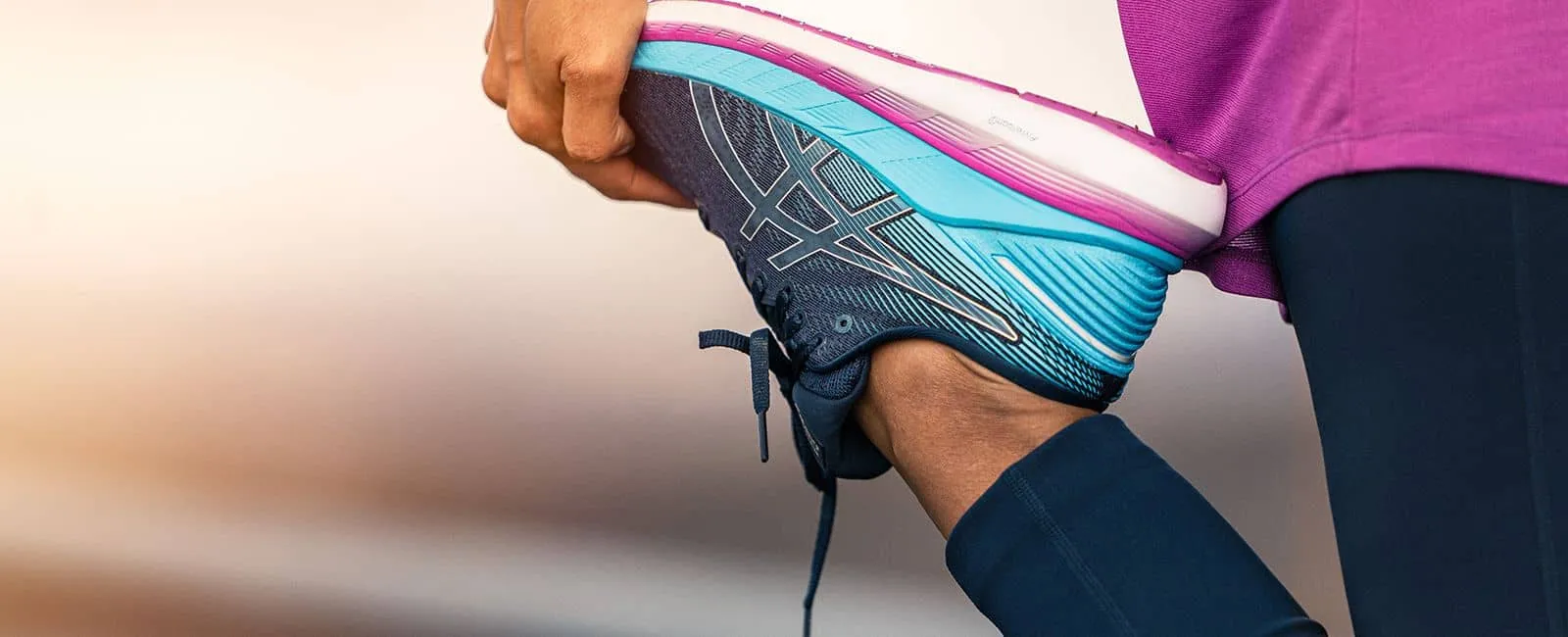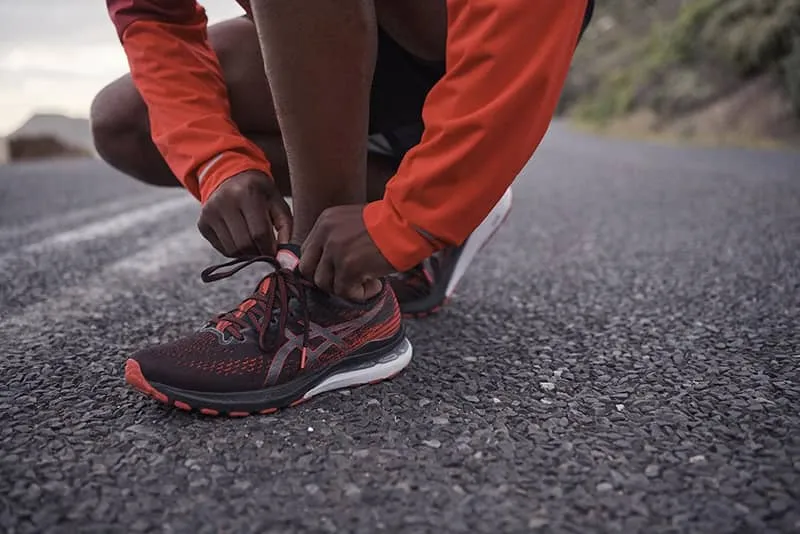
ASICS guide on how to avoid plantar fasciitis
August 20, 2021
Avoiding plantar fasciitis will mean your running programme isn’t held back. Read our stretching tips to learn how to avoid and ease pain
What is plantar fasciitis and how can you avoid it?
As a regular runner, if you start to feel discomfort in the heel of your foot, then there’s a good chance that you might be developing plantar fasciitis. Plantar fasciitis is a common and frustrating condition that can put a real dampener on your workouts. So, how do you go about avoiding plantar fasciitis and what exercises and stretches can help if you start to notice the symptoms?
What is plantar fasciitis?
Plantar fasciitis is a foot condition commonly experienced by runners. Your plantar fascia is a thin ligament that connects your heel with the front of your foot. Repeated pressure on this ligament – especially from running – can cause lots of small tears in the plantar fascia that lead to inflammation and pain.
People suffering from the condition often notice the pain most acutely when getting out of bed in the morning or after exercise (you may not actually notice the pain while running). It can also become unbearable when standing for extended periods.
During the first stages of plantar fasciitis, it may feel like there’s a lump in the heel of your socks. Untreated, this can evolve into stabbing pains in your heels when walking, particularly in the mornings, and ultimately, constant pain.
If you’ve got pain in your feet but you’re not sure if it’s plantar fasciitis or something else, then it’s always a good idea to consult your GP.
How can you avoid plantar fasciitis?
There are several steps that you can take to avoid plantar fasciitis if you start to feel pain in your heel.
- Rest: If you notice discomfort during or after running, then the best thing you can do is to rest and avoid running, jumping and other impact sports for a couple of weeks. If you’re training for a race, then it will be very frustrating, but it’s a lot less frustrating than having to pull out altogether.
- Avoid uncomfortable shoes: High heels, shoes with a tight toe box and shoes that lack support can all inflame the condition. If you’re suffering from plantar fasciitis, choose breathable, broad and low-heeled footwear whenever you can.
- Choose supportive running shoes: A simple way to avoid plantar fasciitis is to wear supportive running shoes that offer impact-absorbing heel support every time you go out for a run.
- Wear insoles: If you have especially flat feet, then you may benefit from using insoles that offer more support when wearing formal shoes.
Plantar fasciitis exercises
If you’re already suffering from the condition or want to reduce the risks, using the following stretches for plantar fasciitis may help. For acute conditions, it’s always advisable to visit a physiotherapist or foot specialist.

Calf stretches
Calf stretches help to loosen your muscles and relieve pain.
- Place your hands against a wall so that your arms are out straight
- Place one foot close to the wall and the other one out behind you
- Gently bend your front knee forward while keeping your back leg straight
- Hold the stretch for around 20 seconds and then release; repeat 2 or 3 times
- Switch your legs and repeat
Roll your foot
This stretch for plantar fasciitis releases tension in the sole of your foot.
- Sit on a chair
- Place a foam roller or a bottle of frozen water on the floor and roll your foot on top of it - from front to back - for one minute
- Repeat the stretch on the other foot
Relieve tension
This stretch helps to relieve tension and builds up the strength in your foot.
- Sit on a chair
- Fold a dish cloth or hand towel lengthways
- Bring one knee off the ground, loop the towel under your arch and then hold one end of the towel with each hand
- Gently pull the towel towards you while flexing your foot for around 15 to 30 seconds
- Repeat on the other foot
Hand stretches
This simple exercise requires no equipment and uses your hands to relieve muscle tightness:
- Sit on a chair
- Cross one foot over the opposite leg and hold the front of the foot with your opposite hand
- Pull the toes up towards your shin to create tension
- Hold this stretch for around 10 seconds and repeat 2–3 times
Towel curls
Another simple exercise, this stretch helps to relieve tension in your feet and calves:
- Sit on a chair
- Put a towel on the floor in front of you and place your feet flat on it
- Grip the towel with your toes and curl them towards you
- Relax and repeat 4–5 times
Return to running when you’re ready
When a condition like plantar fasciitis strikes, it can completely disrupt your training schedule. However, by taking precautionary measures, resting and doing some plantar fasciitis exercises, it is possible to work your way back to full fitness sooner rather than later.
Read our guide to another common running condition, shin splints , and learn how to protect your knees when running .
